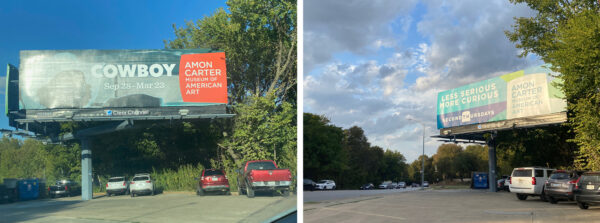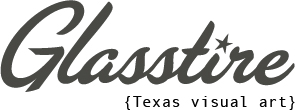On March 6, 2025, House Bill 3958, which seeks to penalize museums for displaying obscene works, was introduced in the Texas Legislature.
Representative David Lowe, who represents District 91 in North Texas, is the bill’s sponsor. HB3958 aims to punish museums for “display[ing] obscene or harmful material in violation of Section 43.22, 43.23, or 43.24, Penal Code.” These referenced codes address the display of “obscene photographs, drawings, or similar visual representation”; “any obscene material or obscene device”; and the “sale, distribution, or display of harmful material to [a] minor,” respectively.
The proposed bill would fine a museum up to $500,000 per day for each item on display that is deemed obscene. It also notes that the Attorney General may instruct the institution to provide injunctive relief, in addition to removing the material from public display indefinitely, and cover costs incurred as part of the investigation or litigation, including attorney’s fees.
Speaking about the ramifications of this potential law, Aaron Terr, the Director of Public Advocacy at the Foundation for Individual Rights and Expression, an nonprofit organization that focuses on the defense and promotion of free speech, spoke to Glasstire about the complexities of a bill that would aim to limit the public display of obscenity. He said, “Obscenity, properly defined, isn’t protected by the First Amendment. But the standard is narrow… It doesn’t help that the obscenity test is somewhat subjective and highly fact-specific. Layer on the added complexity of age-specific standards, and it can be difficult for a curator or librarian to navigate. When you combine that with overzealous or politically motivated enforcement, it’s easy to see how self-censorship can start to look like the only safe option.”
He went on to clarify that it is extremely unlikely that art displayed in a museum would be deemed legally obscene and outside of the protection of the First Amendment. Mr. Terr explained, “The government would have to prove, among other things, that the work lacks artistic value. The odds of obtaining an obscenity conviction over curated art are vanishingly small, even if the likelihood of frivolous investigations into protected artistic expression is on the rise.”
Chloe Kempf, staff attorney at the ACLU of Texas, told Glasstire, “This bill threatens our constitutionally protected right to artistic expression in Texas. As we recently witnessed with the attempted censorship of Sally Mann, legislation like this seeks to intimidate artists and curators through baseless investigations of, and penalties against, our artistic communities. The people of Texas, not government officials, should have the freedom to decide what forms of art we want to view and support.”

Amon Carter Museum of American Art billboards on University Street, October 22, 2025 and October 30, 2025.
The bill comes on the heels of two public issues around North Texas museum exhibitions. In October 2024, the Amon Carter Museum of American Art temporarily closed an exhibition and then reopened it with a “mature content” sign displayed outside of the show’s entrance. They also canceled a slew of programs originally scheduled to highlight the show, and replaced billboards advertising the exhibition with advertisements for its Second Thursday programs. Though the museum never confirmed which artwork in the exhibition was deemed “mature,” some community members have told Glasstire they suspect it was related to Querias Norte, an installation by rafa esparza in collaboration with Fabian Guerrero and Yomahra Gonzales, which depicts two cowboys kissing.

rafa esparza in collaboration with Fabian Guerrero with leatherwork by Yomahra Gonzales, “Querias Norte.” On view at the Amon Carter Museum of American Art in “Cowboy.”
Then in January, the Modern Art Museum of Fort Worth gained national attention when the Fort Worth Police Department seized five Sally Mann photographs, which depict her children nude. The seizure followed a criminal complaint filed by Tarrant County Judge Tim O’Hare, alleging the works constituted child pornography. The artworks were displayed in the museum’s temporary exhibition Diaries of Home. In March, over a month past the exhibition’s closing, a Tarrant County Grand Jury declined to bring charges against the museum or the artist.
On March 27, HB3958 was referred to the Committee on State Affairs. In order to be signed into law it must pass a vote by the Texas House of Representatives and Senate.
Elizabeth Larison, Director of the Arts and Culture Advocacy Program at the National Coalition Against Censorship, told Glasstire, “Whatever one’s feelings about the Texas Grand Jury’s correct conclusion that the work of Sally Mann is indeed protected artistic expression and not a crime, no state legislature has the power to penalize or ban expression that is fully protected by the First Amendment.”
If the bill is signed into law, the act would take effect on September 1, 2025.




2 comments
As an artist, and a mother, this is an important issue. I have been on both sides of this issue as well. I have been invited to show some work in a Dallas Gallery that was highly thought of by working artists, and when I dropped off my work, I took a look at the instalation and submitted work to see if I would invite my tween children to come to the reception.
When I saw nothing x rated or even R rated in my mind, I invited them. I had to apologize to them at the reception, because some x rated material had been added at the end of take in.
Additionally, I have a certain type of printmaking that was drawn with eyes closed, before turning it into a print. I viewed it as a kiss on the forhead in an abstract way, yet secondarily saw a falic symbol that when displayed at a Gallery in Denton, Tx, a Man pointed out to me in a way that lead me to believe it offended him. (Which was not my intent.) We as artists should be responsive to our audiences, and family venues, are not for our most revealing art, whether intended to be revealing or simply seen by many as a subconsious revelation.
So much about your comment saddens me. “Obscenity” is in the heart of the beholder. As a career artist, my long-time sculptural collaborator* and I used to joke, “One tit is art, two tits is pornography.” A part of me is glad that he did not live to see the sh*t show we are now enduring as artists along with the institutions that are charged with presenting art to the public.
What I am taking away from your comment is that you believe that as artists we must self-censor in order to avoid the offense of others. This goes against every fiber of my being as an artist and advocate for the arts. “The Man” to whom you refer saw a phallus in your work. As THE ARTIST, your self-described print represented what sounds like a chaste kiss. Who is wrong here? Who has been wronged? You owe The Man nothing but contempt. If he was offended and shamed you at your own exhibition, he was the abuser here. People see what they see and that is one of the interesting aspects of being an artist; what your work awakens in others and what it often reveals about them.
Go Forward. Create. Do not censor yourself. Ever.
*Charles Kegley, RIP